Most college or university presidents to have recently taken the helm might have had a grasp of their job expectations before the turn of the decade—or even when the pandemic went into full swing. However, none could have expected the speed at which it would force these leaders to adapt, or in some cases, reinvent themselves.
No cohort of presidents might be more familiar with this than those leading small private colleges or universities in the Northeast.
With a smaller pool of available students due to demographic shifts, a growing wake of attention to mental health and a swelling public skepticism of higher education, these leaders from Pennsylvania, New York, Massachusetts and Maine are redefining their job to guide their schools in murky waters.
“If we were to go back 15 years and look at the college presidency, I would venture to say the job probably had about 70% certainty and 30% uncertainty, and you would spend the necessary time to navigate your way through that small 30%,” says Robert Johnson of Western New England University (Mass.). “I would say today in a post-COVID world and all the other different dynamics that are involved with leading an institution, there’s 75% uncertainty and ambiguity and 25% certainty.”
Some see it as the same job but with a lot more hats to wear.
“Presidents of small colleges in particular need to have facility or expertise in everything—budgeting, fundraising, government relations, academic program development and student development theory, to name a few, says Elizabeth Meade of Cedar Crest College (Penn.) “All of this is in addition to the strategic planning, leadership, and board management skills that come with the job.”
Here are what these presidents grapple with and how they are remaining headstrong in the new higher education landscape.
More from UB: Presidential exits: Some leave on a high note, others entrenched in scandal
The worth of a degree – higher education’s “existential threat”
Northeastern higher education leaders passionately explained how they’ve witnessed the transformation individuals, families and communities have undertaken when awarded a college degree. However, those outside the higher education sphere aren’t as convinced. “There’s a disconnect of discourse across the country questioning the value of higher education,” says Johnson.
The issue partly stems from ill-advised legislation, according to James Herbert of the University of New England in Maine.
“Ideally, policy decisions should start with a clear vision of the problem to be solved and should thoughtfully and dispassionately consider various alternatives, with careful consideration of unintended consequences along with appropriate caution and restraint to avoid overreaching. Unfortunately, that’s not how it often works,” he said, according to an email. “Whether motivated by sincere good intentions, mere political expediency, or some mixture of both, both state and federal legislators are increasingly weighing in on issues impacting higher education, and not always with good results.”
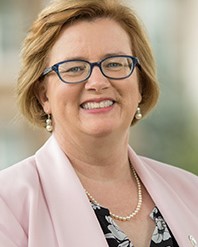
To Meade, the conversation doesn’t carry any substantial real weight.
“It is under attack not because it’s not living up to its promise, but because I think there is a feeling in this country that we don’t want to provide the financial support to higher ed that we have in the last 70 or 90 years,” she says. “The question isn’t of its value, the question is whether we as a society want to prioritize it. I believe that very, very deeply.”
Fewer students, more teamwork
With a decreased pool of students and a consequent smaller pool of revenue and resources, President Reisberg of Hartwick College (N.Y.) and other Oneonta community leaders are reevaluating their relationship with one another.
“I—and I also feel confident in saying my fellow president at SUNY Oneonta—believe that the economic vitality of our region is dependent on both of our institutions’ continued success and that we can both best succeed if we collaborate as opposed to compete, leveraging our complementary strengths,” he says.
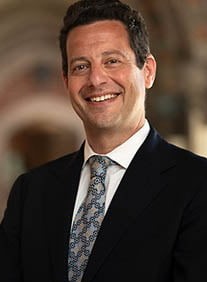
SUNY Oneonta President Alberto Cardelle invited Hartwick College to join the Regional Innovation Council to collaborate on regional issues and opportunities in healthcare and human services, business development, and employee recruitment and retention to name a few.
Herbert believes some institutions need to rip the Band-Aid off and face the music.
“The ongoing drop in high school graduates, particularly in the Northeast and Midwest, is well documented,” he said. “Both public and private institutions are slow to adjust to this stark reality for several reasons, including, government subsidies that prolong reckoning with failing business models, resistance to mergers and acquisitions, and sheer wishful thinking that things will somehow magically improve. Students would be better served by fewer, stronger institutions.”
The college experience: In-person, online or hybrid?
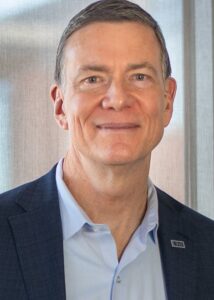
After the pandemic offered students a taste of what the online college experience is like, students and staff alike are questioning what the future holds for it despite campuses opening back up.
“I believe the ability to manage dialogue and establish relationships in a hybrid environment is critical now for any college,” said Michaele Whelan of Wheaton College (Mass.), according to an email. “While it has some limitations and my preference is to have an in-person conversation, the hybrid environment offers flexibility and convenience, and it is here to stay.”
Meade is open to the hybrid experience, but she confesses that hybrid students are hard to keep engaged. “We have to find solutions to pull those students listening online in more,” she says.
For Johnson, the pandemic has led him to appreciate the face-to-face student experience even more.
“I have always believed that online education was not the panacea of the college experience, how to interact with different people from various socio-economic backgrounds,” he says. “The college experience is exactly that—it’s an experience. It’s a moral, social and ethical development of young people between the ages 17-22 as they transition from teenagers to adulthood and college campus and experience is what makes that happen.”
Student success is key
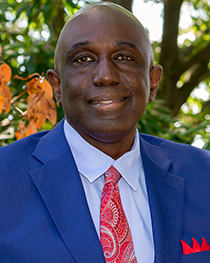
Reisberg believes how well students reintegrate back into re-opened campuses will determine Hartwick’s retention rates. As result, the liberal arts college has rolled out FlightPath to build a strong support network around each of its students by pairing them with a success coach, a faculty advisor, a career coach and an alumni mentor.
Western New England University is tackling student success on the mental health front, which has become an overwhelming challenge.
“There are not enough counselors out there,” says Johnson. “I don’t think you’ll find a president in the country who will be able to tell you that they have a sufficient number of counselors on staff that they can hire or commission to meet the demands of their community.”
WNE has thus begun working with the Mental Health First Aid Program which plans to train students, staff and faculty with the necessary tools to face mental health and substance-use issues in the community.
Revolutionizing recruitment and marketing
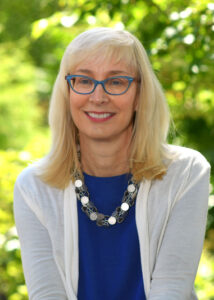
Meade believes recruitment in higher education has changed on two fronts: It’s a buyers’ market now and student outreach is an entirely new animal.
Akin to how the streaming era ushered in a revolutionary new way consumers watch shows whichever and whatever shows at their convenience, so, too has the way potential students expect communication from an interested school.
“Students aren’t sitting around waiting for us to email them things,” says Meade. “That means an entirely different website design, navigation, relying more on text as a strategy, and fundamentally reinventing our communications strategy on a continuing basis.”
“Personalization, personalization, personalization,” stresses Johnson. “How will this educational opportunity meet my specific need? The day of mass marketing is a thing of the past.”







